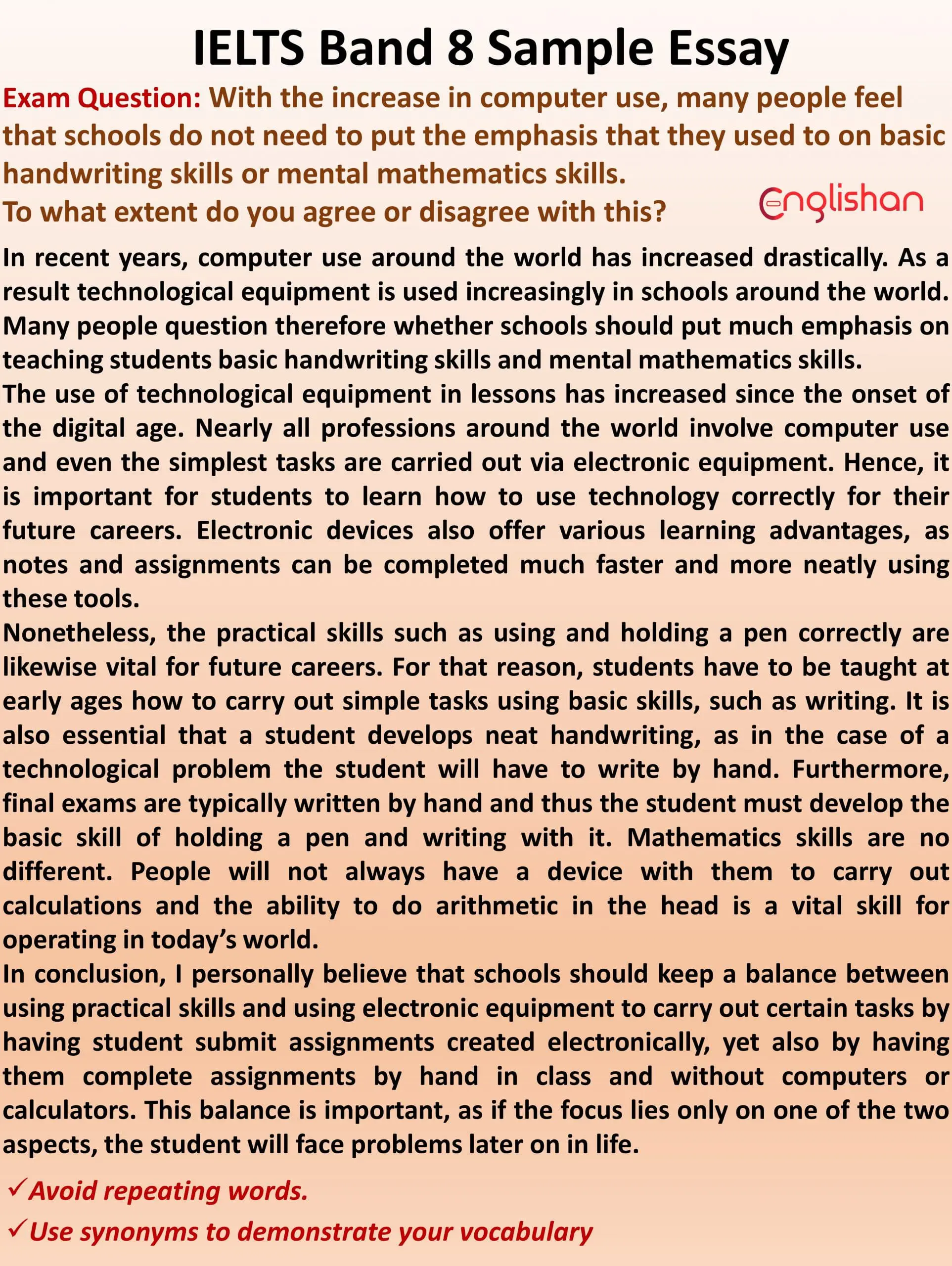Contents
Learn how IELTS helps improve English language skills & why language skills are important for success. Read our IELTS Essay Samples today!
In modern education, the IELTS (International English Language Testing System) helps check how well you speak and understand English. It’s important because English is a global language. IELTS tests your language skills, which are needed for school and work. This essay looks at different “IELTS Essay Samples” to show why language skills matter. You can learn how to use English well for success in your studies and job.
Important Tips to Write IELTS Essay
- Understand the Question: Grasp the topic and requirements.
- Plan Your Ideas: Organize your thoughts before writing.
- Clear Introduction: Start with a brief, focused introduction.
- Use Examples: Support your points with specific examples.
- Stay Focused: Stick to the topic and main argument.
- Structured Paragraphs: Divide your essay into clear paragraphs.
- Formal Language: Write in a formal, academic style.
- Vocabulary and Grammar: Use varied vocabulary and correct grammar.
- Transition Words: Connect ideas using transitional phrases.
- Balanced Argument: Present both sides if required, then express your view.
- Summarize in Conclusion: Recap main points in your conclusion.
- Stay within Word Limit: Follow the recommended word count.
- Proofread: Check for errors in grammar, punctuation, and spelling.
- Time Management: Allocate time for planning, writing, and editing.
- Practice: Regularly write essays to improve your skills.
Types of IELTS Essays
- Opinion Essay (Agree/Disagree)
- Discussion Essay (Advantages/Disadvantages)
- Problem-Solution Essay
- Advantages and Disadvantages Essay
- Direct Question Essay
- Two-Part Question Essay
- Cause and Effect Essay
- Process Essay
- Comparison Essay
- Pie Chart/Bar Graph/Line Graph/Map Essay
- Mixed Graph Essay
- Double Question Essay
- Opinion and Discussion Essay
To improve your understanding of writing IELTS essays, consider reading the IELTS Essay Samples below for a band score of 8.
IELTS Essay Samples Images










FAQs:
To Write an Essay in IELTS (Short Guide)
1. Understand the Question: Identify the essay type (e.g., opinion, discussion, problem-solution).
2. Follow a Clear Structure:
Introduction: Paraphrase the question and state your main idea.
Body Paragraphs: Write two paragraphs, each with one main idea and examples.
Conclusion: Summarize your points and restate your opinion.
3. Use Formal Language: Avoid informal phrases and contractions.
4. Add Linking Words: Use words like however, moreover, for example, and in conclusion for flow.
5. Check Word Count: Write at least 250 words.
6. Manage Time: Plan (2-3 mins), write (30 mins), and review (5 mins).
Practice regularly to improve!
To Get 8.5 in IELTS Writing (Short Guide)
1. Understand the Criteria: Fully answer the question, use advanced vocabulary, write complex sentences, and avoid errors.
2. Plan Before Writing: Spend 2-3 minutes organizing ideas.
3. Use a Clear Structure: Introduction, 2 body paragraphs, and conclusion.
4. Write Sophisticated Sentences: Use a mix of sentence types with accurate grammar.
5. Use Precise Vocabulary: Avoid repetition; use synonyms and collocations naturally.
6. Link Ideas Well: Use connectors like however, moreover, consequently.
7. Practice and Review: Write regularly, check for mistakes, and get feedback.
Consistent effort will get you there!
1. Plan (2-3 minutes): Think of two ideas and examples.
2. Structure:
Introduction: Rephrase the question and state your main idea.
Body 1: Explain your first idea with an example.
Body 2: Explain your second idea or opposite view with an example.
Conclusion: Summarize your main points.
3. Use Linking Words: Like firstly, however, for example, in conclusion.
4. Check for Mistakes: Spend 5 minutes reviewing grammar and spelling.
Write clearly and stay on topic!
How to Write Task 1 Introduction in IELTS
1. Paraphrase the Question:
Rewrite the information in your own words.
Avoid copying phrases directly from the question.
2. Include Key Information:
Mention what the chart, graph, or diagram is about.
Include the time frame (if given) or key details like categories or locations.
Example:
Question: The graph shows the number of visitors to three museums in 2005.
Introduction: The graph illustrates the number of visitors to three museums in 2005.
You May Also Like






